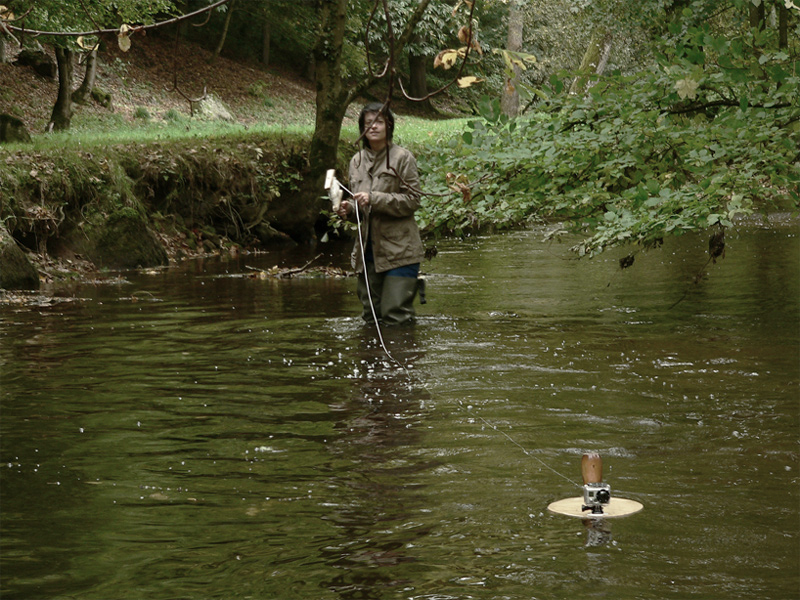Process
Rivers of Brittany
Ongoing realization: Aulne river(2022-2025): River's Memory project: immersive route, arts-sciences collaboration.
Films realized: : The river (2012 - 4 versions), Trieux river (2019 - 2 versions): immersive route in the riverbed, walking or with a canoe, from spring to mouth or by ,tronçons.
Installation and performance: Watershed of the Vilaine river (2002 - Fractale M): route on the banks and water samplings.
Routes without public restitution: Gouédic, Gouessant, Aff, Serein, Belon, Scorff, Leguer, Leff, Sèche...

Immersion: Films made on rivers can only be made, for technical reasons, from the riverbed and not from the banks. Therefore they constitute a radical performance of immersion in the watercourse. By traveling through the rivers, I literally immerse myself in the flow of life.
Shots: It is the river which, through its rhythms, accidents and intimate
swirls, unfolds the script of the film; I just trigger the shot regularly
and systematically, for a few minutes, before bringing the camera back towards
me. As I am located 50 to 100 meters upstream to avoid - among other things
- parasitic swirls, I cannot guess in detail what is being filmed.
This way of proceeding, by giving a large part to chance, also grants intentionality
to the river, considered as a living entity, a subject.
These very numerous shots provide the content for several montages about the
same river.
Just as the river is never the same, the film changes depending on where it
is shown. Each film is a unique and not definitive piece, a testimony to a
given moment.
Walking: The return to the car left somewhere upstream is done walking
the banks and nearby: I then discover the “other side” of the river,
an often anthropized landscape which conditions river's health.
This submerged and emerged walk is also an attempt to reconnect with one of
the last biological continuums of the territory, a vestige of the wild in
terrestrial Brittany. In the past, when the forest covered the entire surface,
the river opened a line of traffic for riders and walkers. It traced an opening
in the landscape, sometimes indicated by megalithic monuments.
This walk coordinated with a natural element awakens the ancestral memory
of the nomad: to connect with the river in this slow rhythm is to connect
to a living pulsation, and through it, to the symphony of the earth. The river
is both a summary of the landscape through runoff, and a summary of time through
its perpetual and ancestral cycle.
“Humans are made to walk” Etienne Davodeau
Today, the river is either abandoned or reworked and mistreated for utilitarian
purposes. In both cases, it is invisible and not considered for itself.
The human imprint can be seen there in a subtle or immediate way.
In Brittany, the vast majority of rivers are polluted by nitrates and pesticides,
which are then found in tap water.
